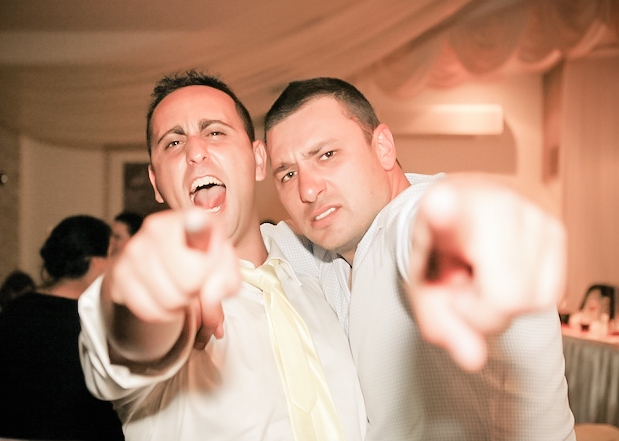Is there a European reader? One who wants to understand the lives of the people living in bordering countries, who wants to know how the continent is faring? Newspapers such as the Financial Times and Wall Street Journal have international readers, but they tend to mainly cover business and economic issues aimed at international elites. No one has tried to reach out to the ordinary European citizen.
In January 2012 six major European dailies — Le Monde, The Guardian, Süddeutsche Zeitung, La Stampa, El País and Gazeta Wyborcza — decided to launch Europa, their own European project. Born as a result of a dinner conversation Europa is nothing like readers have seen before.
The project is bold, innovative, cheap. Through a series of interviews with the key editors and journalists involved, the Reuters Institute for the Study of Journalism has published an early report on Europa’s methods, successes and limitations.
Europa is a far cry from earlier attempts to create a European newspaper. In 1991, the now notorious publisher Robert Maxwell launched The European with a conceited, upbeat marketing campaign featuring businessmen in shades and models posing for expensive looking fashion shoots.
Maxwell wanted it to be an alternative for American magazines, like Newsweek and Time, targeted at “technocrats who spoke English as a second language”. Sounds ambitious? Yes it does, but back then, the world was a different place. Controlled by powerful and often murky moguls, newspapers had an enormous influence and resources to spend, while Europe was seen as a kind of a new deal, a prosperous place with borders and hassles about to vanish.
But no one really bought into the image of Europe as a glossy, stylish, powerful place that needed its own newspaper. And yet after eight years of fighting for survival, The European was closed down.
Europa was launched in different times, with a different mindset. It is a product of collaboration between companies and doesn’t have a single owner. Europa’s editorial team consists of members from all six newspapers. None of the partners presides over Europa and has the final say.
Keeping costs down is an important consideration for all participants. The newspapers use existing staff to produce content. Europa does not have its own offices: the publications involved take it in turns to host editorial meetings. Editors travel on cheap airline ticket, translations are done in house.
Editorial decisions are made collectively. The team reaches a consensus on the framework of the next issue: the main topic and areas to be covered, officials or experts to be interviewed, the leading stories, the number of articles to be commissioned, etc. This collegiality is limited to editorial decisions; technical and business matters such as paper orders or sales policy are left to the individual publishers.
Europa is built on its partners’ existing readership base, which allows it to reduce the risks typical for the launch of a new brand. The supplement is distributed with the newspapers’ main editions and sold at their regular cover price. But the most important thing that makes Europa stand out of media crowd is its approach to reporting the EU.
Europa’s editors decided that too much coverage of the EU focused on its institutions and on policy made by technocrats in Brussels. They decided instead to report on the EU’s human dimension. Europa sticks to stories of the people, ordinary European citizens rather than directives and policies.
So far it tackled such issues as young Europeans, education as well as home budgets in Eurozone crisis. The originality of Europa’s narrative derives from presenting the coverage in a comparative manner, in which the experiences of one country correspond directly with the parallel experiences of another.
The project has impressed senior politicians. Angela Merkel, Francois Hollande and Mario Monti have all agreed to give interviews. Mark Rice-Oxley, international planning editor at The Guardian said the collaboration made Europa more powerful. “When we come to a politicians office and ask for an interview with six European newspapers, it works well,” he said.
But despite its successes and high quality reportage, Europa attracts a tiny number of new readers and – in most cases – fails to attract advertisers. Many of the participants, including The Guardian and Le Monde were reluctant to disclose figures about traffic to Europa stories.
The newspapers involved believe Europa is worth continuing. Despite the low advertising revenues, it is still a cost efficient way to enhance their brand. Unlike The European (and many other projects), it’s an editorial initiative rather than a business-oriented venture.
It has already helped its participants established a relationship that leads to collaboration in other areas: when Angela Merkel went to Athens, Süddeutsche Zeitung made its reporting available to La Stampa. In return, the Italian daily supported its German partner with its coverage of the Pope’s resignation, while Le Monde allowed Süddeutsche Zeitung to use some of its coverage of the Mali conflict. With the help of its Europa partners, The Guardian drew up a cultural map of Europe. All six dailies used the crowd-sourcing technique to ask their readers to report the closure of cinemas, galleries, museums and other cultural institutions due to budgets cuts.
It may not yet be a financial success, but Europa’s editors believe it has opened up a lot of avenues, and, at a time of budget restraints and cost cutting journalism, allows them to explore new ways of doing international journalism.








































